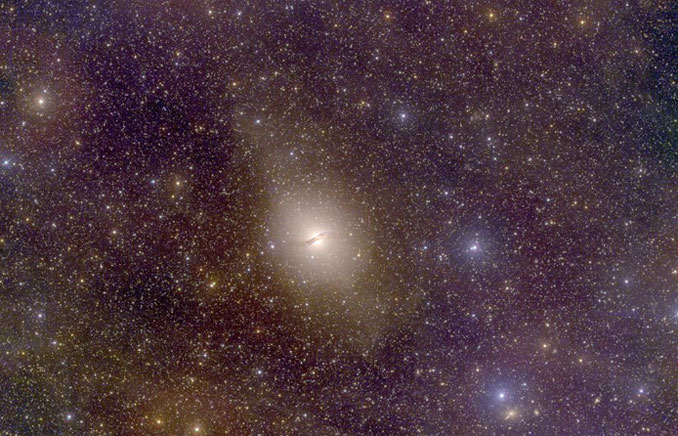
Large galaxies like the Milky Way frequently are surrounded by smaller gravitationally bound dwarf galaxies. Generally accepted theory holds that the gravitational effects of dark matter, the as-yet-undetected material thought to make up roughly 27 percent of the universe, should ensure a random distribution of orbiting dwarf galaxies.
The Milky Way and the nearby Andromeda galaxies were thought to be exceptions to the rule, with satellite galaxies arranged in disk-like planes. New findings from a team led by Oliver Müller of the University of Basel’s Department of Physics indicate this may be a more widespread phenomenon.
Müller’s team studied satellite galaxies orbiting Centaurus A, a familiar galaxy some 13 million light years away, and found they were aligned in a plane perpendicular to the parent galaxy. By studying Doppler shifts to determine movement, the team found 14 of 16 satellite galaxies appear to be rotating in the same plane. Dark matter computer models predict only a tiny fraction – a half percent – of satellite galaxies should exhibit such alignment.
“Coherent movement seems to be a universal phenomenon that demands new explanations,” Muller said in a press release. Given the ordered alignments have now been seen in three parent galaxies, coincidence appears unlikely.
The observations are “inconsistent with more than 99 percent of comparable galaxies in simulations,” the journal Science writes in a summary. “Centaurus A, the Milky Way and Andromeda all have highly statistically unlikely satellite systems. This observational evidence suggests that something is wrong with standard cosmological simulations.”
Writing in Science, Müller argues the observations strengthen the idea that satellite galaxies are formed when two larger galaxies collide and tidal forces eject debris.



